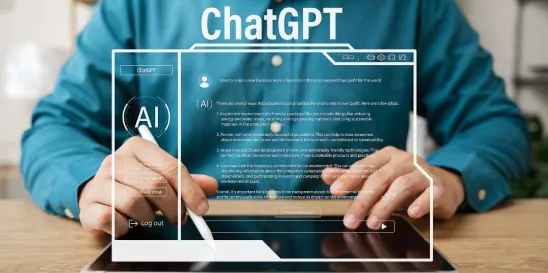A New York attorney working a personal injury case just learned why it’s called “generative” AI the hard way.1
In 2022, Robert Mata, represented by attorneys of Levidow, Levidow & Oberman, P.C. (“Levidow”), filed a personal injury action against airline Avianca, Inc. After the case was removed to the Southern District of New York, Avianca filed a motion to dismiss on January 13, 2023. Mata’s response to the motion to dismiss, which was filed by Peter LoDuca of Levidow, was full of case law citations in Mata’s favor, including:
- Varghese v. China Southern Airlines Co Ltd, 925 F.3d 1339 (11th Cir. 2019)
- Shaboon v. Egyptair, 2013 IL App (1st) 111279-U (Ill. App. Ct. 2013)
- Petersen v. Iran Air, 905 F. Supp 2d 121 (D.D.C. 2012)
- Martinez v. Delta Airlines, Inc., 2019 WL 4639462 (Tex. App. Sept. 25, 2019)
- Estate of Durden v. KLM Royal Dutch Airlines, 2017 WL 2418825 (Ga. Ct. App. June 5, 2017)
- Miller v. United Airlines, Inc., 174 F.3d 366 (2d Cir. 1999)
The only problem? None of the cases listed above actually exist.
In Avianca’s March 15th reply, Avianca attorneys noted that they were unable to track down many of the cases cited in Mata’s filing, which resulted in the Court ordering Mata to file copies of the cases in question. LoDuca complied on April 25th, filing text with the court on behalf of Mata that purported to be the elusive case law. But attorneys for Avianca raised serious questions of the cases’ authenticity, as did the Court in its issuance of an Order to Show Cause:
The Court is presented with an unprecedented circumstance. A submission filed by plaintiff’s counsel in opposition to a motion to dismiss is replete with citations to non-existent cases. When the circumstance was called to the Court’s attention by opposing counsel, the Court issued Orders requiring plaintiff’s counsel to provide an affidavit annexing copies of certain judicial opinions of courts of record cited in his submission, and he has complied. Six of the submitted cases appear to be bogus judicial decisions with bogus quotes and bogus internal citations. Set forth below is an Order to show cause why plaintiff’s counsel ought not be sanctioned.2
LoDuca subsequently filed an affidavit on May 25th explaining that Steven Schwartz, another attorney at Levidow, “opened the file and handled the representation of Mr. Mata.”3 In an affidavit filed by Schwartz, Schwartz explained that LoDuca was made attorney of record because Schwartz was not admitted to practice in the Southern District of New York like LoDuca was.4 Schwartz went on to explain that he was responsible for the legal research in question, but that he “consulted the artificial intelligence website Chat GPT in order to supplement the legal research performed,” which he alleges was responsible for procuring the cases that the Court “found to be nonexistent.”5 Schwartz’ affidavit included screenshots of his purported conversation with ChatGPT, in which he asks if the cases ChatGPT provided him are “fake.” The response generated by ChatGPT indicates that the cases it provided to Schwartz “are real and can be found in reputable legal databases such as LexisNexis and Westlaw.”6
Unsurprisingly, Schwartz’ justification was not good enough for the Court. Just one day later, the Court issued a second Order to Show Cause, this time ordering both Schwartz personally and Levidow as a firm to show cause at a hearing early next month as to why they should not be sanctioned for Schwartz’ citation to non-existent cases in court filings. Schwartz also faces the potential of being referred to the jurisdiction’s grievance committees.
In response to the considerable publicity (e.g., New York Times, CNN) this case has received since the Court’s Orders to Show Cause, at least one court has issued a new standing order requiring that every filing be accompanied by a mandatory certification regarding generative intelligence. The order states, in part,
All attorneys and pro se litigants appearing before the Court must, together with their notice of appearance, file on the docket a certificate attesting either that no portion of any filing will be drafted by generative artificial intelligence (such as ChatGPT, Harvey.AI, or Google Bard) or that any language drafted by generative artificial intelligence will be checked for accuracy, using print reporters or traditional legal databases, by a human being.
Similar events have been reported in the United Kingdom as well.
These cases provide a good opportunity to provide a refresher on several longstanding ethical rules (not to mention best practices) that apply here.
First, the comments to Model Rule 1.1 (Duty of Competence) explain that a lawyer should “keep abreast of … the benefits and risks associated with relevant technology.” The risk that generative AI will hallucinate – and lie about it afterwards – is something that lawyers should be aware of before using it.
Second, there are several potentially-applicable duties of supervision. Model Rule 5.1 requires that “[a] lawyer having direct supervisory authority over another lawyer shall make reasonable efforts to ensure that the other lawyer conforms to the Rules of Professional Conduct.” Model Rule 5.3 explains that “a lawyer having direct supervisory authority over [a] non-lawyer shall make reasonable efforts to ensure that the person’s conduct is compatible with the professional obligations of the lawyer.” To be sure, there is no argument that ChatGPT or other generative AI tools are lawyers or other persons (though it has passed the Uniform Bar Examination), meaning that—for now—these rules may not be literally, directly applicable. But they provide sound guidance for overseeing the work of a tool that creates output that resembles human-quality writing.
Third, Model Rule 1.6 requires attorneys to maintain confidentiality of client information. As we have previously discussed, confidential information should not be included in prompts for generative AI because of the risks of inadvertent disclosure.
Finally, though it should go without saying, one simple practice would have prevented this episode: cite check it before you file it.
1See generally Mata v. Avianca, Inc., No. 22-CV-1461 (PKC) (S.D.N.Y.).
2 Order to Show Cause at 1, Mata v. Avianca, Inc., No. 22-CV-1461 (PKC) (S.D.N.Y.), ECF No. 31 (internal citations omitted).
3 Affidavit in Response to Order of May 4, 2024 at ¶ 1, Mata v. Avianca, Inc., No. 22-CV-1461 (PKC) (S.D.N.Y.), ECF No. 32.
4 Affidavit of Steven Schwartz at ¶ 4, Mata v. Avianca, Inc., No. 22-CV-1461 (PKC) (S.D.N.Y.), ECF No. 32-1.
5Id. at ¶¶ 6-7.
6Id. at p. 6.






 />i
/>i

